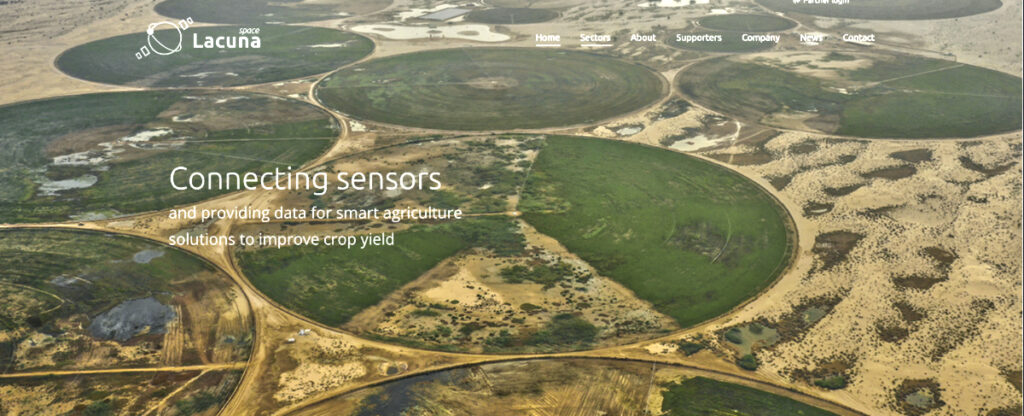
by Oxford Space Systems.
Right: Mission patch for Lacuna Space’s “Call of the Wild” mission
Lacuna Space recently launched new satellites under the company’s Call of the Wild mission banner, a major step forward in scaling their direct-to-device (D2D) IoT network.
This is the first of several launches planned for 2025, bringing increased global capacity to meet the fast-growing demand for ultra-low-power, infrastructure-free sensor connectivity in remote environments.
The satellites feature Lacuna’s proprietary LoneWhisper® payload, designed and built entirely in-house. It is optimized to receive small, infrequent messages from low-power devices and transmit them directly to orbit, enabling true global coverage without the need for ground-based communication infrastructure.
Water is among the most critical, and least connected,resources on the planet. Traditional monitoring often depends on manual sampling and site visits, making it expensive, inconsistent, and impractical in remote or dispersed areas. Lacuna’s direct-to-device connectivity changes that. With low-power sensors transmitting data directly from the field, organizations can now monitor water quality continuously, in real time, without relying on cellular networks or gateways.
Field deployments are already supporting:
• Monitoring boreholes and wells for pH, turbidity, and salinity
• Tracking salinity and runoff in agriculture
• Detecting pollution in rivers and coastal zones
These sensors typically send only a few small messages per day, and often operate for years on a single battery. The Call of the Wild satellites are the first of several new missions launching this year. Together, they will significantly expand Lacuna’s coverage and message throughput, strengthening its position as a global leader in direct-to-orbit IoT for remote monitoring. Water quality monitoring is just one example of how Lacuna’s network is being used to solve critical challenges in hard-to-reach environments across the globe.
Lacuna Space was the first to fly Semtech’s high-capacity LoRa® chipset back in 2019. Since then, the team has run multiple missions, completed detailed global spectrum surveys, and fine-tuned every element of the system. This deep experience means they understand how to get the best out of the technology, whether it is tracking soil moisture for smart agriculture or monitoring water quality in remote regions, the system is built for dependable performance in the toughest environments.

The demand for remote IoT connectivity is accelerating fast—and that’s what’s driving this next phase of growth,” said Rob Spurrett, CEO, Lacuna Space. “We’ve already proven that our technology works where others simply can’t: in remote, infrastructure-free environments. Now we’re scaling to meet real-world demand. This mission marks a step-change: from pilot projects to large-scale, operational deployments. With LoneWhisper®, we’ve built the highest-capacity direct-to-device LoRa® receiver in orbit—giving us the ability to support more devices, more reliably, than any other solution in the market. Our system is designed not just to reach remote places, but to scale across the globe.”
From early flood warning systems and pollutant tracking to compliance monitoring for agriculture and industry, the demand for low-power, wide-area connectivity is only increasing. Satellite IoT, as delivered by Lacuna Space, is uniquely positioned to meet this demand,” said Clifford Shapland, Digital Development Officer at Ceredigion County Council. “The ability to capture consistent and accurate measurements in hard-to-reach areas has unlocked a new level of granular environmental insight. We see this use-case as effectively limitless in scale and duration. Wales alone has over 33,000 km of rivers and streams, many of which pass through rural or isolated terrain.”
Lacuna Space is a prime example of UK innovation in satellite communications, addressing real-world needs,” said Dr. Paul Bate, Chief Executive of the UK Space Agency. “Their low-power, direct-to-device connectivity brings the benefits of space down to Earth by enabling efficient and affordable IoT services, including monitoring of vital resources such as water infrastructure. The UK Space Agency is proud to support Lacuna’s journey to becoming a global leader in satellite-based IoT, showcasing the UK’s leadership in new satellite communications markets.”
